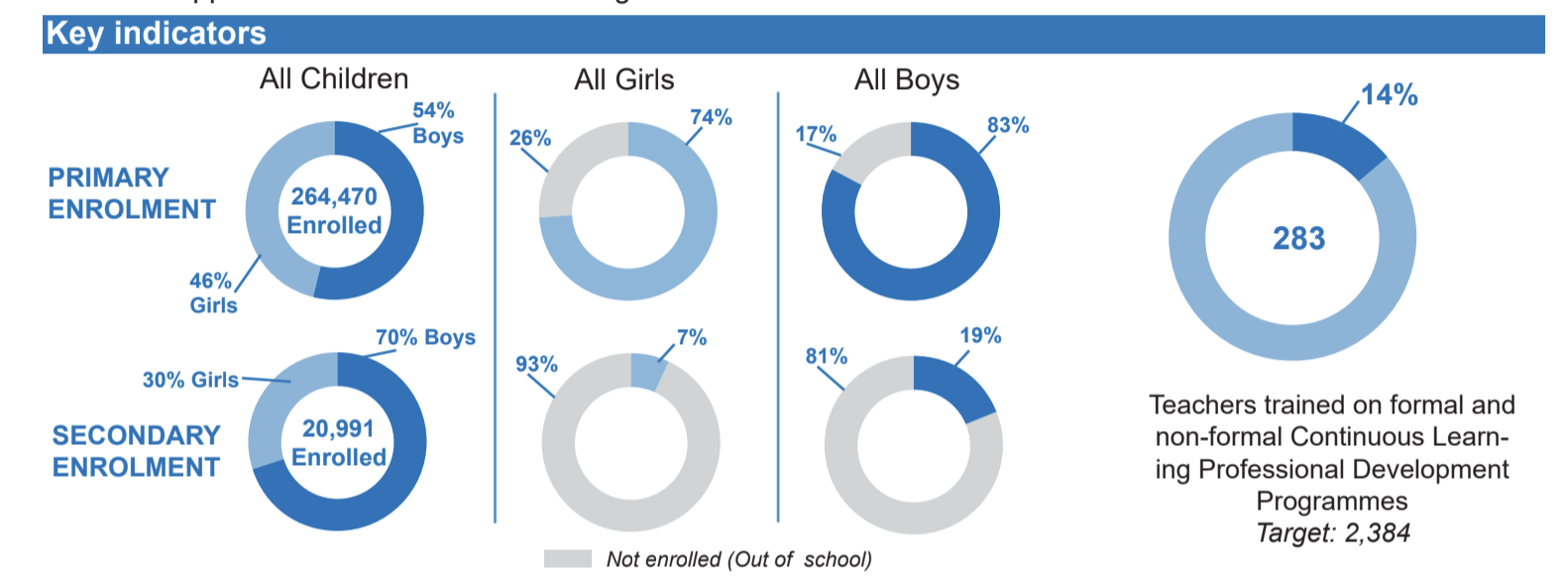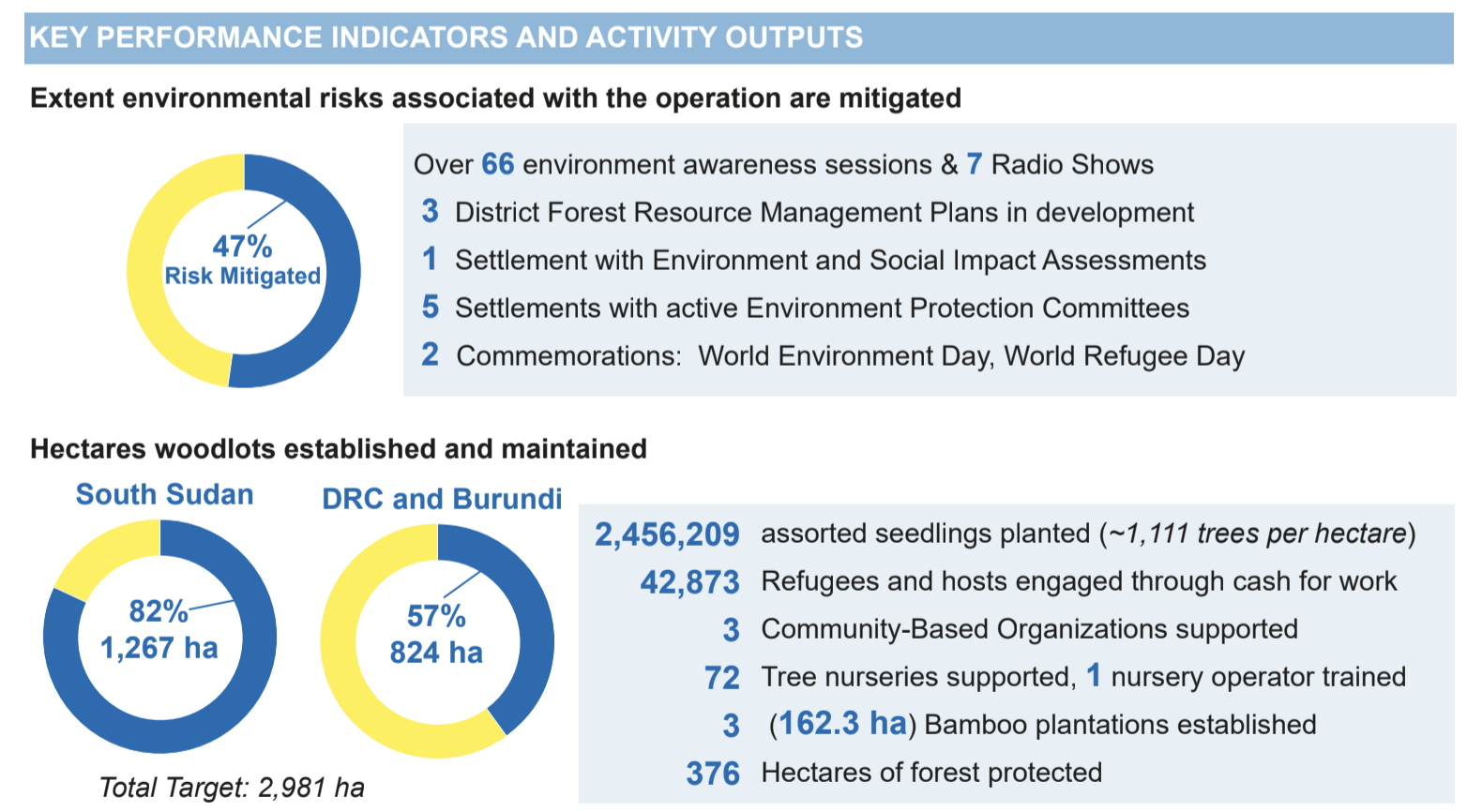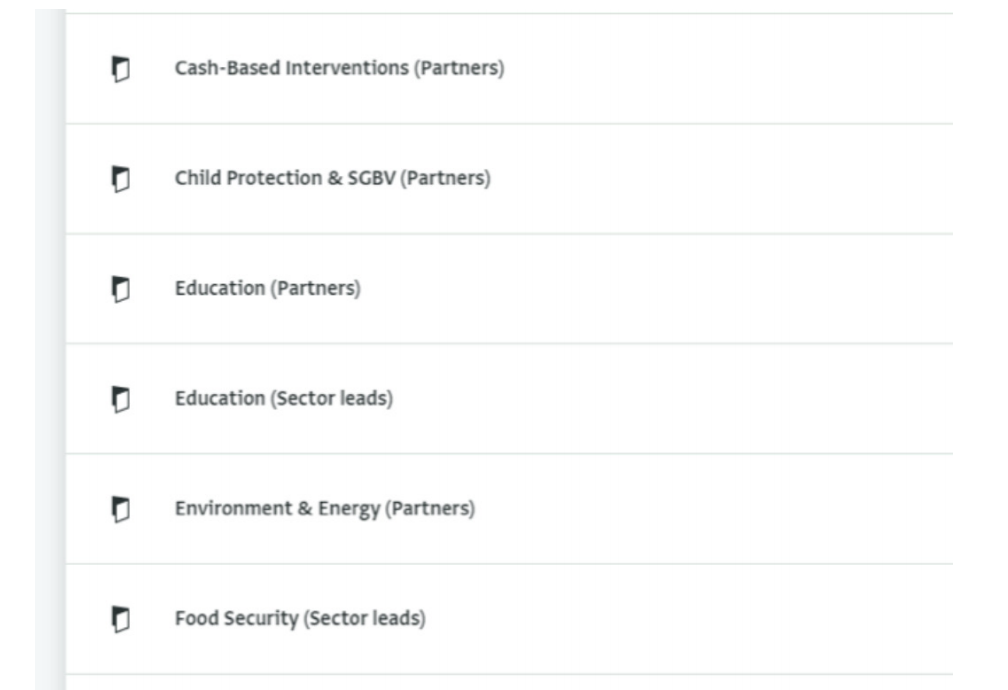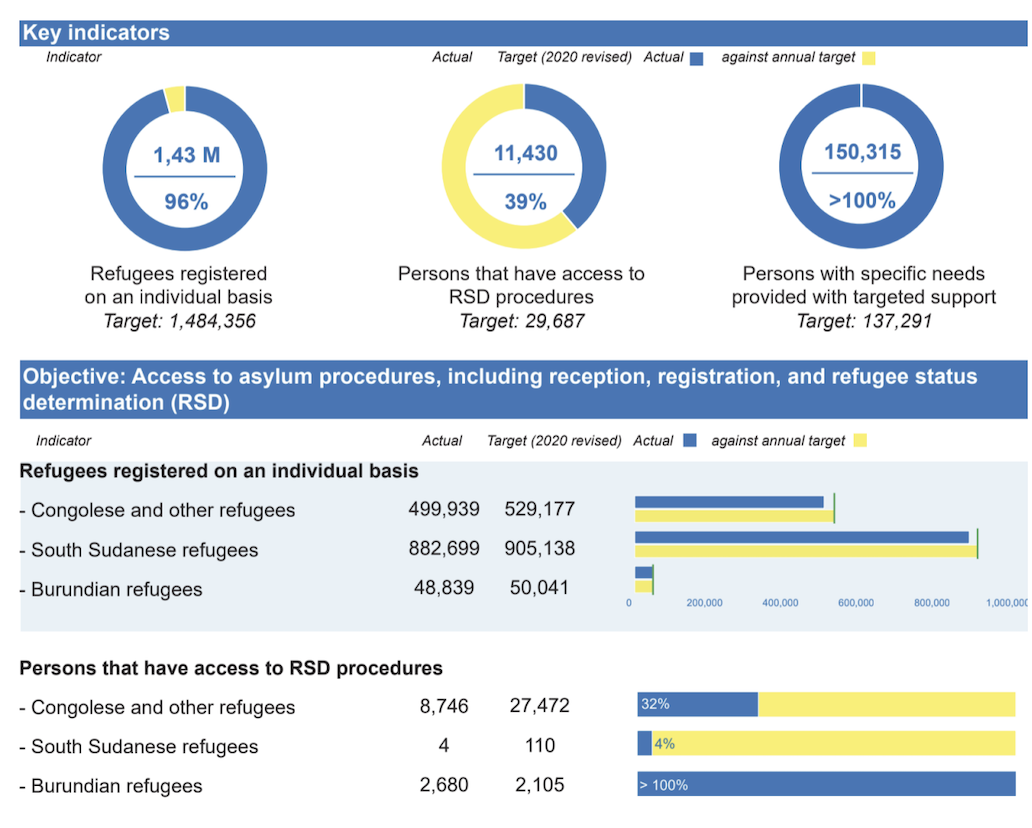How UNHCR in East, Horn of Africa and the Great Lakes region serves diverse reporting needs with a unified platform
Executive Summary
The UNHCR regional office for the East, Horn of Africa and the Great Lakes region covers the activities of 11 countries in the region. The office runs very large operations where multiple organizations and large amounts of data are involved.
UNHCR adopted ActivityInfo in the region to bring together the diverse reporting activities of the regional and country offices. By harmonizing the data coming from various reporting efforts, ActivityInfo serves as a unified platform between key actors.The platform is currently used by the Kenya, South Sudan, Sudan, Rwanda, Somalia and Uganda country offices.
ActivityInfo was selected because it was flexible, quick to deploy and easy to learn. Every office, regardless of the complexity of the reporting needs, can adapt and expand the use of the platform to include more programmes and activities.
At the same time, the coordination between sectors is improved. This makes reporting activities more cost effective. Reporting partners can quickly get trained on a common platform which they can reuse everytime a new reporting requirement comes up. As a result, ActivityInfo can be easily integrated in any operation and eventually become an enabling, intrinsic part of a programme.
Some examples of reporting activities that have been centralized include:
- Partner monitoring
- Programme & Project monitoring
- Distributions monitoring
- Regional COVID-19 Response
- Global Protection Cluster activities monitoring
The platform has also been used for internal case management.
The advanced user permissions, the ActivityInfo API and the various possibilities of database and form structures allow each country to adjust the platform to their own monitoring needs. This also allows the regional office to synthesize results based on data coming in from multiple partners and countries and produce information products for the region.
We spoke with Mr. Vino Raj Ratnaraj, IMO for the UNHCR Kenya Operation and member of the IM team of the regional office, who shared valuable insights on how the platform is used at country and regional level. Mr. Ratnaraj has also worked with the UNHCR Headquarters and has been involved with ActivityInfo for the last 5 years.
We would like to warmly thank Ms. Anna Minuto, regional, senior IMO, for bringing ActivityInfo in the region and supporting the adoption of the platform for regional, country programme and partner activity monitoring.

Meeting needs faster with a unified platform for all reporting levels
Before adopting ActivityInfo, information was exchanged mostly using Excel spreadsheets and documents within and among country offices in the region.
The need to control and centralize all this scattered information became quickly apparent. At the same time, it was important to put a system in place that would serve the reporting requirements of all coordination levels (country, region, and HQ). The system needed to be flexible enough to accommodate different kinds of interventions and activities led by UNHCR, such as distribution monitoring, programme, project and partner monitoring, case management and more.
ActivityInfo came in as the solution to these requirements and soon became a unified reporting mechanism for the key actors involved. As the platform shifted from indicator tracking to databases and forms, it could cover more needs for the UNHCR offices at the regional and country level.
While discussing the reasons why ActivityInfo replaced the previous reporting methods, Mr. Ratnaraj, Information Management Officer for the Kenya Operation and member of the team of the regional UNHCR office, describes,
“The traditional way of doing this was mostly using Excel sheets and with documents going around. We wanted to control that and centralize the information in one place in a way that everyone could access it online.
Also, ActivityInfo can be used as an activity monitoring platform and a programme or project monitoring platform, at the same time. Then, case management and follow up of a particular project or activity is easy compared to tools designed to be assessment tools and not for project monitoring or distribution monitoring or activity monitoring.”
Thanks to its flexibility, the system becomes a cost-effective solution especially when many actors are involved. Forms and databases can be designed according to the specific needs of each intervention and activity.
Instead of a ‘one solution fits all’ approach, each database and form is designed after careful consideration to accommodate the reporting needs at each level. Once reporting partners are trained on data entry in the platform, they can report on any future form.

Coordination at the country level
At the country level, each country office can have its own database or participate in other databases too. For example, in Uganda, where ActivityInfo is used for project and partner monitoring, more than 100 partner organizations report on all the sectors that are active in the country such as the shelter, protection, child protection sectors and more. While discussing the development of databases and forms, Mr. Ratnaraj notes,
“The design of the forms and databases depends on each case’s needs. Whenever for example, there is a distribution planning happening or project management or an assessment need, we think of how to use Activityinfo instead of another tool because you can do more things in the platform such as individual follow ups, distribution management and all that. So the design and structure is based on the need of each intervention.”
Apart from monitoring purposes, ActivityInfo can also be adapted to other use cases such as case management and follow ups for particular projects.
An example is the Kenya operation which focuses on refugees and asylum seekers. ActivityInfo was recently rolled-out in the country and is currently used by 6 partner organizations.
The platform is mostly used for internal case management related to cash distributions in order to monitor the cash assistance approval and assist the cash assistance planning. The office plans to use it for other protection cases in the future.

Coordination at the regional level
At the regional level, among various cases, ActivityInfo is used to coordinate the reporting in three refugee situations; the Burundi Situation, the Somali Situation and the South Sudan Situation.
In situation monitoring, centralized data is collected by each country for each situation. Then, the data is synthesized to understand the progress of the interventions in the region, as a whole.
So for example, for the South Sudan Situation, information is collected from all countries involved in this situation in a database which is then used to show the overall developments regarding the situation.
“For the regional analysis we directly use the data found in the different repos. At the same time, we create separate dashboards for the regional analysis”, explains Mr. Ratnaraj while discussing the refugee Situation Monitoring.
ActivityInfo is also used to coordinate the reporting activities for the Global Protection Cluster as well as the COVID-19 monitoring activities in the region where all countries report to common regional databases. “For the COVID-19 monitoring we also have common regional databases where other countries can report,” Mr. Ratnaraj adds.

Coordination at the Headquarters level
Apart from the country and the regional level, ActivityInfo has been used in the past to support the UNHCR Headquarters in coordinating a global intervention monitoring.
An example is a database that was created for cash-based intervention monitoring at the global level. The CBI database was created to monitor the interventions in around 80 countries. The data was submitted to the Headquarters by each country office and then imported into ActivityInfo.

Everyone starts working quickly and without technical knowledge
An important element in all humanitarian programmes is to be able to work fast. It is important to have a system that is ready to use as soon as possible and which doesn’t require a lot of resources and planning on developing it. It is also important to be easy to train the colleagues and partner organizations so they can start using it quickly.
Mr. Ratnaraj explains,
“If you want to develop a complete database using SQL or Oracle you can do it but the problem is that it takes a lot of time, a lot of resources and a lot of planning. For humanitarian needs, for me, even an ACCESS database is time consuming.
Humanitarian organizations are not software corporate companies. We just need very basic functionalities available in a very short period of time that are ready to use as soon as possible.
So those key features are there in ActivityInfo. Now, I can develop a database and then form an API connection to a Power BI dashboard within a day and on the second day I can train somebody I know.
This is not possible with other tools that are available.”
To coordinate the information management process, the regional office creates a ‘package’ for reporting. After deciding on the data to collect, the regional office team plans the database and form structure in ActivityInfo and turns the reporting requirements into forms.
Following sessions on user management respective permissions are given to users. The administrators of the databases are prepared with separate remote or in person training sessions. Then, the team designs an Excel sheet for import and export along with standard Power BI dashboards and shows this ‘reporting package’ to the partner organizations responsible for data entry. ActivityInfo is web-based and allows real-time data analysis either with built-in tools or via various exporting options and the API.
So once data is added to the forms, everything else is automated and the Power BI dashboards are informed via the ActivityInfo API.
The Dashboards present the regional analysis based on the data collected in the various databases and forms.
“Data entry is the key. If we have the data in the database then everything else is automated using the API links to Power BI”, notes Mr. Ratnaraj.
Fast and cost-effective data entry training on a common platform
To train partners on data entry is straightforward as no technical knowledge is needed to use ActivityInfo. Once trained, reporting partners know everything they need to be able to use the interface when a new reporting requirement comes up. By using a common platform for all these types of reporting requirements, the time spent on training is decreased as all effort is focused on learning how to use a specific platform instead of multiple, different reporting tools.
In Uganda, there are more than 100 partner organizations using the sector databases and each organization joins the training sessions with 2 -3 people. This means that the regional office ends up with a large number of users who need to be trained.
“In terms of training reporting partners, we focus more on logging into a database and starting data entry. We don’t show how to design forms as there is no need for that at the partner level.
So training is very straightforward and it can be online. And then the documentation you have on the ActivityInfo platform and all the videos are very straightforward too. So we never had challenges regarding training. Much less technical knowledge is needed. If you know how to do data entry, you can manage it in ActivityInfo”, notes Mr. Ratnaraj.
Users can easily understand the concepts behind ActivityInfo as they don’t need to understand how relationships in databases work.
As the platform has an easy-to-use interface and is fine-tuned to the capacities existent in other tools, users can easily get used to it. They can be trained in the learner’s language and avoid any confusion brought by relational databases definitions and other software terms.
Also, as ActivityInfo is available in multiple languages, users can navigate and complete their work in the platform more easily.
“It was good timing when ActivityInfo changed from traditional indicator tracking into databases and forms because people could immediately understand the concepts. They don’t need to have full technical knowledge of the database relationships and how things work.
It is very easy to show ActivityInfo to someone without complicating the issues in terms of relational database concepts or software terms. You can always use the learner’s language to train someone on ActivityInfo and then it is fine tuned to the capacities of other existing tools.
So if somebody develops a form, the data entry part is straightforward; you don’t need to be a technical expert to do that,”explains Mr. Ratnaraj.
Advanced user permissions reflect organization and programme structures
In large deployments and multipartnered programmes there are different types of stakeholders involved in the monitoring and reporting process.
It is important to be able to control the access that each actor of a programme has to the reported data. When a platform is used at all levels in an organization, from field office to HQ, granting refined permissions according to the user type is crucial.
In this case, the offices at the country or regional level discuss the access needs of each type of user beforehand and then assign the respective permissions by using the existing user roles in ActivityInfo or by creating new roles to address more refined access requirements.
By selecting specific resources such as folders, forms, or subforms the access is limited further, from the whole database to only the necessary resources.
Using the multi-partner database template and the partner reference list, users can be separated and grouped based on their organization so that they can access only the records of forms and subforms assigned to their organization.
“We separate the users based on their organization. Each organization might add two, three focal points who can access the database.
We use the partner reference table and then we link it to the partner entity and to the forms and then the subforms automatically connect with it.
For that, we have a conversation in terms of the permissions. So we already have an idea of who will have full and partial access and what user roles will be used. If the roles don’t fit the needs, we create new roles and assign them to the users according to the access rights we want to use”, explains Mr. Ratnaraj.
Flexible account management
Getting a subscription for an account in ActivityInfo is very straightforward for UN offices.
ActivityInfo has signed a Global Frame Agreement with UNHCR which enables all UNHCR Field Offices to directly raise a Purchase Order for a customized Subscription Plan to ActivityInfo, having secured the approval of the UNHCR Headquarters and making the procurement process simpler and quicker.
Also, there are country offices which own their own subscription and other country offices which work under a regional or global sector subscription.
In most cases, other UN Agencies can use the terms of Frame Agreement to procure ActivityInfo through a streamlined process.
Conclusion
All in all, ActivityInfo was adopted by the UNHCR regional office and 6 UNHCR country offices in the East, Horn of Africa and the Great Lakes region as a solution to the need for reporting coordination and information centralization at multiple levels.
By being easy to use and quick to set up the platform facilitates the day-to-day work of the information management officers and reporting partners. After setting up databases and forms, data is collected for regional, country or internal coordination via an easy, uncomplicated data entry process. Then, thanks to the ActivityInfo API real-time information can be automatically shared via Power BI dashboards.
With the advanced user permissions and database templates the correct level of access can be given to every type of stakeholder, be it in the field, at regional level or in the Headquarters.
Finally, the training of reporting partners is straightforward which has significant importance in rollouts and programmes where hundreds of partner organizations are participating.
We would like to warmly thank Mr. Vino Raj Ratnaraj and Ms. Anna Minuto for their contribution and for making this Case Study possible.
